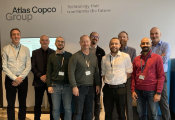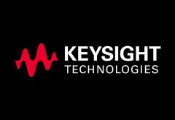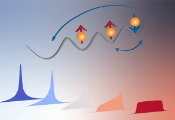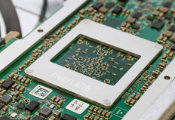Pioneering Room-Temperature Quantum Computing in WA
October 31, 2024 -- Imagine a future where quantum computing is as accessible as the smartphone in your pocket. Where a quantum chip is embedded in your laptop, or thousands of quantum chips are deployed in supercomputing centres, forming the world’s most powerful quantum supercomputers. With this vision, Quantum Brilliance partnered with Pawsey Supercomputing Research Centre to develop the foundational steps of diamond-based room-temperature quantum computing. During this year’s Prime Minister Awards for Science, that bold ambition has been recognised, with Quantum Brilliance co-founder Dr Andrew Horsley named the 2024 New Innovator of the Year.
The power of collaboration — Pawsey and Quantum Brilliance
At the Pawsey Supercomputing Research Centre, we are committed to supporting transformative research and innovation. This partnership is one example of how we bridge visionary startups with real-world applications, enabling companies to explore new technologies and scale rapidly into industry leaders.
Founded in 2019 as a spin-out from the Australian National University (ANU), the Quantum Brilliance team distinguished itself from traditional quantum computing companies by developing room-temperature quantum technology, eliminating the need for bulky, energy-intensive cryogenic systems that typically restrict quantum computing installations.
While their early work was rooted in academia, Quantum Brilliance’s potential quickly caught the attention of forward-thinking institutions like the Pawsey Supercomputing Research Centre. In 2020, the two organisations partnered, with Quantum Brilliance installing the world’s first room-temperature quantum accelerator at the Centre in 2022.
The successful deployment demonstrated Quantum Brilliance’s ability to build and deliver industry-grade quantum computer prototypes compatible with supercomputing centre environment. Operating the system in such an environment and enabling external pioneer partners to access the machine for real-world applications, allowed Pawsey and QB teams to explore key quantum-classical integration and operational challenges, leading to improved systems.
The partnership provided Pawsey access to quantum hardware and facilitated the development of in-house quantum expertise and knowledge transfer between both teams. It also helped advance Pawsey’s sustainable computing goals through Quantum Brilliance’s energy-efficient platform.
Quantum Brilliance: From Concept to Global Impact
Quantum Brilliance’s rapid evolution from a small research team to an internationally recognised quantum technology company reflects the strength of its vision and the strategic value of partnerships like ours. With Pawsey’s support, they accelerated their research, translating foundational scientific breakthroughs into deployable quantum accelerators that have gained global attention.
“Since the start of our collaboration, Quantum Brilliance has gone from strength to strength. We have grown from our founding team to more than 80 employees across Australia and Germany,” said Mark Luo, Quantum Brilliance CEO.
The company’s expansion includes strategic partnerships with institutions such as the Fraunhofer Institute for Applied Solid State Physics IAF in Germany and La Trobe University in Melbourne. More recently, Quantum Brilliance partnered with Oak Ridge National Laboratory, home to the world’s most powerful supercomputer, Frontier, to further develop quantum-classical integration with the deployment of the world’s first cluster of quantum accelerators. This partnership aligns with Pawsey’s vision that accessible, practical parallel quantum computing can solve previously unattainable challenges.
Driving Innovation Through Collaboration
“The success of Quantum Brilliance underscores the vital role that research centres like Pawsey play in the early-stage development of breakthrough technologies,” said Mark Stickells, Pawsey CEO.
“Our collaboration offered Quantum Brilliance a real-world supercomputing environment to validate their room-temperature quantum accelerators and test their performance in a challenging scientific setting. We explored how these quantum devices can act as accelerators for classical computing, paving the way for a future where hybrid quantum-classical systems may operate at scale,” Mr Stickells continues.
Pawsey’s national Quantum Supercomputing Innovation Hub with initiatives to train and support staff and researchers, and partnerships with quantum research groups and industry leaders, has dramatically lowered the barrier to entry to this state-of-the-art technology.
Quantum computing will be pivotal in solving specific types of computing problems in genomic data analysis, materials science, and cryptography and developing applications for enhanced decision-making in autonomous vehicles, rapid sensor data processing in factories, or complex satellite signal processing.
We are also building a future-ready workforce. During 2024, more than 350 researchers participated in our quantum computing training programs, supported by diverse partners delivering more than 1500 learning hours.
A Future Driven by Innovation
Looking ahead, the partnership between Pawsey and Quantum Brilliance serves as a model for supercomputing centres to support emerging technologies. By offering a world-class research environment and working closely with partners, we enable innovators like Quantum Brilliance to push the boundaries of what’s possible.
As Quantum Brilliance expands globally, integrating its technology into supercomputing centres worldwide, we take pride in being part of their journey. Together, we are advancing quantum computing and shaping a future where practical, accessible quantum technologies drive discoveries and unlock unprecedented opportunities.
“At Pawsey, we believe collaboration is key to technological transformation. We are excited to continue supporting pioneering research that drives innovation,” concluded Mark Stickells, Pawsey CEO.




































